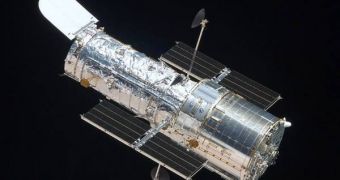Engineers working with the Hubble Space Telescope have recently said that they are extremely pleased with the instrument's new performances, made possible through the most complex orbital mission in history, space shuttle Atlantis' STS-125. The 13-day excursion saw the complete overhaul of the famous observatory, which is currently undergoing an extensive battery of tests. According to predictions, the machine will again become available for scientific observations in late August. At that time, science teams around the world will be once more able to rent viewing time on the telescope, and point it to their points of interest in deep space.
After the repairs, the NASA team says, Hubble will most likely be able to view the early Universe, within 400 to 500 million years of its creation. This means that a wide array of never-before-seen images could be made available. The experts also underline the fact that some of the most mind-boggling images that the telescope supplied over the past two to three years were not taken with its primary cameras, but with its secondary ones. With it Advanced Camera for Survey now online again, the overhauled observatory will undoubtedly be able to increase its resolve of distant objects.
Atlantis' mission to orbit was the fifth and final repair mission to the renowned telescope, which has, over the course of its “career,” brought astronomy in average homes and inspired a generation. During their 13-day mission to the observatory, the seven astronauts aboard the orbiter performed five back-to-back spacewalks, which saw Hubble being restored not to its former glory, but to a higher level. More than $220 million worth of equipment went inside the spacecraft, as part of a $1.1-billion mission.
Some worries existed at the end of STS-125, because the shuttle could not land on Friday, and neither on Saturday. The bad weather at the Kennedy Space Center in Florida prevented any attempt of approach, despite the fact that five landing windows were available during the 48 hours. In the end, NASA ordered the crew to land at the Edwards Air Force base, in Southern California. They did so on Sunday, at 11:39 am EDT (1549 GMT). It was only at that time that the mission was considered a success.

 14 DAY TRIAL //
14 DAY TRIAL //